Canada is justifiably renowned for its national parks which introduce visitors to special ecosystems and, if Mother Nature obliges, glimpses of wildlife that call these habitats home. Canada’s national parks are managed by Parks Canada, the body responsible for protecting the network of Canadian national parks, urban parks, historic sites, marine conservation sites and historic canals and waterways.
As a keen, outdoorsy Canadian who loves hiking, horseback riding, paddling, snowshoeing and spotting Canadian wildlife, I’ve visited many national parks across Canada. But with 226 sites to choose from, how do you choose where to go? Here are my personal favourites listed from our east to west coasts.
Contents
- Canadian National Parks
- National Parks in Alberta
- National Parks in British Columbia
- National Parks in Newfoundland and Labrador
- National Parks in Prince Edward Island
- National Parks in Nova Scotia
- National Parks in New Brunswick
- National Parks in Quebec
- National Parks in Ontario
- National Parks in Manitoba
- National Parks in Saskatchewan
- National Parks in Yukon
- Canadian National Parks Resources
Also read:
Canadian National Parks
National Parks in Alberta
1- Banff National Park
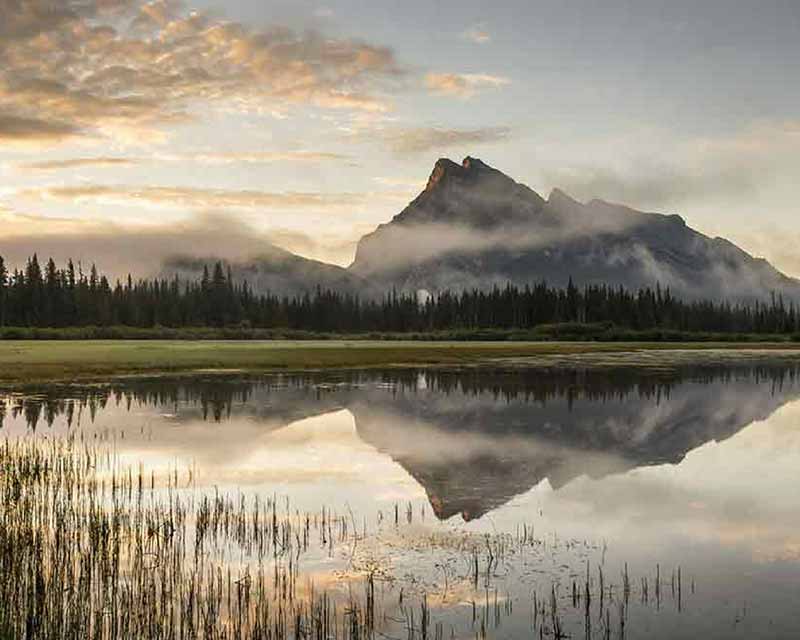
Banff is a magnet for tourists – and is Canada’s first national park, created in 1885.
It’s no wonder it attracts international visitors: from the bustling village scene featuring the Whyte Museum of the Canadian Rockies and the Fairmont Banff Springs Hotel, the wilderness beckons.
World-famous Fairmont Banff Springs Hotel and its renowned golf course are famous for autumn sightings of elk which are in rut during late August through October.
During mating season, males “bugle”: listen for a wavering call which starts as a deeply resonant “uhhhhn”, rising to a high-pitched squeal, followed by grunts.
It’s an unforgettable sound and sight, particularly if two males start to butt heads, which creates a cracking sound as antlers entwine and skulls bang together.
Meanwhile, it’s comical to see harems of females grazing, appearing to ignore the fuss.
Remember to keep your distance: stay a good 10 metres away from the males because you’ll be interpreted as a threat, and they might charge.
The towering, signature sloping peak of Mount Rundle, the Cascade Range of mountains, and gondola-accessible Sulphur Peak embrace the village, enticing us to explore.
For me, it’s always the backcountry that steals the show.
Take a several-day horseback ride and explore the wilderness – yet sleep in comfort at beautiful lodges such as Sundance, with Banff Trail Riders.
Banff National Park hiking is pretty special too.
There are trails to suit your energy levels, whether it be multi-day backcountry backpacking trips or gentler, more easily accessible Banff camping.
Part of the Canadian Rocky Mountain Parks UNESCO World Heritage Site, Banff’s glowing turquoise lakes and tumbling rivers will capture your heart.
They did mine… and I’m always keen to return.
A great place to start out learning about Rocky Mountain wildlife is by visiting the amazing, heritage collection of taxidermy wildlife at Banff Park Museum National Historic Site of Canada in the Village of Banff.
Here you can examine a grizzly “up close and personal,” check out identification books in the library or watch videos in its Discovery Room.
Birdwatchers flock to Vermillion Lakes, just outside of Banff village. In the summertime, I’ve never failed to see common loons here, and once discovered an adult on its nest.
Also here scan for bald eagles on their nests: look for scraggly looking bundles of sticks in a spruce tree!
In May I’ve found Harlequin ducks diving in the churning meltwaters of rushing rivers: for sure you’ll want binoculars to identify them, as well as more common lakeside ducks as bufflehead, common goldeneye, hooded and common merganser.
Lake Louise is another famous destination in Banff National Park and although I’ve not seen the wild cats I have seen both lynx and cougar tracks when skiing in winter here.
Tracks, scat and other signs (tree rubbings), as well as dens and mineral licks, are exciting wildlife finds that you can watch for when you’re on park trails.
2- Waterton Lakes National Park
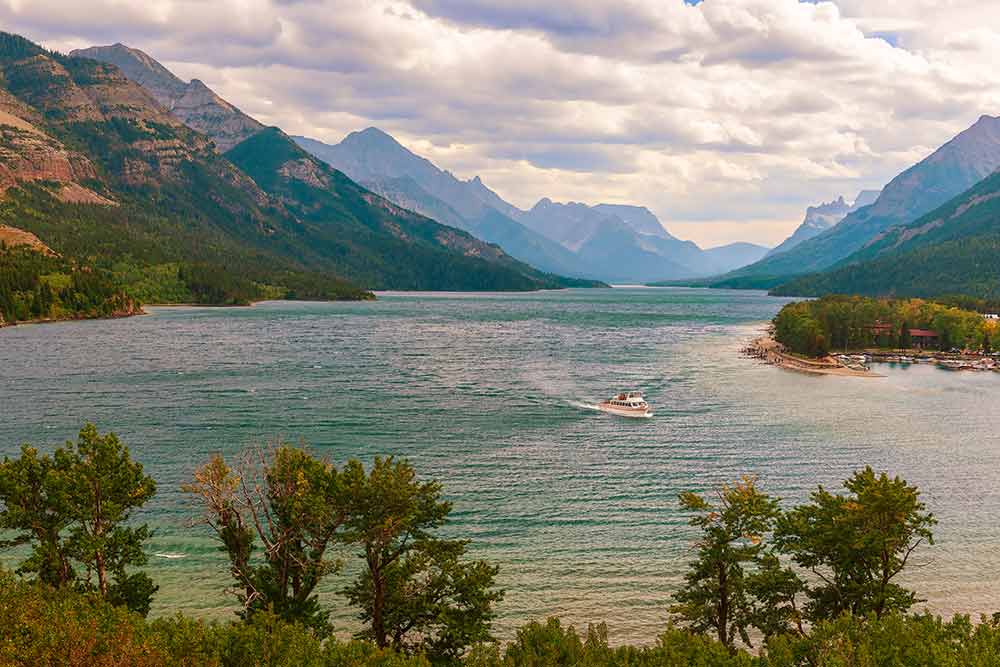
I’m a horsewoman and I love nothing better than exploring the backcountry on horseback.
So when my husband Eric and I got the opportunity to explore Waterton Lakes National Park with Alpine Stables’ sure-footed steeds, we leapt at the chance (you must book in advance for any overnight horseback expeditions).
Of course, if riding isn’t your thing, there’s awesome hiking and a good First Nations set of talks where elders share their wisdom about native culture.
What to see here in Waterton Lakes National Park?
First, come because it, along with the American Glacier Park, is the other half of the Waterton-Glacier International Peace Park.
This is a UNESCO World Heritage Site because of its adjacent land mass, mountain landscape, glaciology, and abundant wildlife.
Think ridge after ridge of towering peaks surrounding Upper Waterton Lake.
Located at its northern tip on a high promontory of land, the Prince of Wales Hotel is a national historic site unto itself, being a romantic wooden structure, one of the famous railway hotels in Canada’s west.
Waterton’s grassland and mountain landscapes are renowned for their beauty and accessibility. The park is approximately three hours south of Calgary.
At lower elevations, we saw white-tailed deer and black bears, bald eagles, grey jays, boreal chickadees and other bird species.
3- Jasper National Park
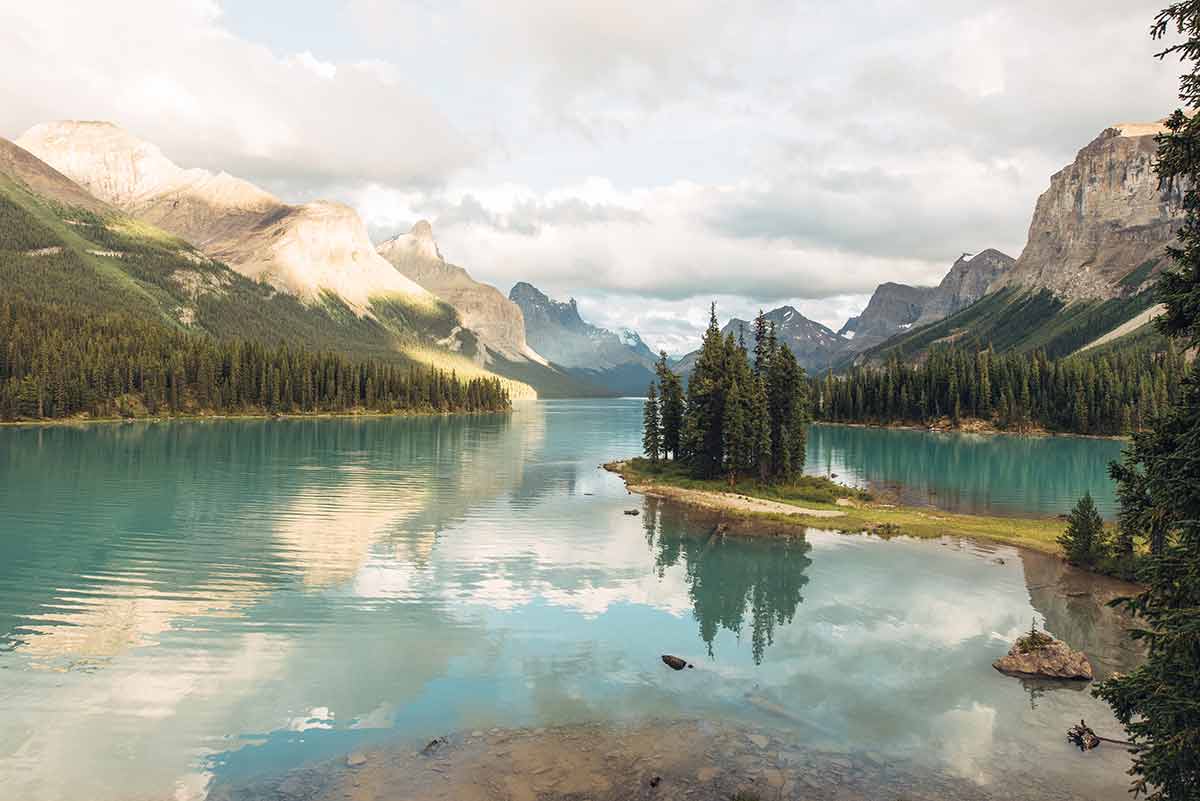
One of my all-time favourite Canadian Parks, Jasper continues your exploration of UNESCO’s Canadian (really wild) Rocky Mountain Parks World Heritage Site.
Drive north from Banff along the Icefields Parkway and into Jasper, or else take the train across Canada from Edmonton or Winnipeg or Toronto.
Either way, it’s a spectacular trip revealing moment after moment of the Canadian wilderness.
Watch for bighorn sheep, elk, deer and even grizzly and black bears on highways – and please, remain in your car.
Wild animals are unpredictable, so take photos from the safety of your vehicle and never, ever feed them.
Another reason I love Jasper? The Dark Sky Festival (October). Come to view the night sky in this DSP (Dark Sky Preserve) designated by the Royal Astronomical Society of Canada.
The festival always includes scientists who chat to us all about the wonders of the heavens.
Plus there are lots of opportunities to gaze through telescopes with astronomers at your side who are keen to explain what you’re seeing.
Go, and adjust your sensibilities to an appreciation of dark skies.
As in Banff, Fairmont Jasper Park Lodge’s golf course is a must for seeing and hearing bugling elk.
Also, this property has an easy hiking trail surrounding Lake Boisvert – a great place to bird watch and perhaps spot deer, red fox, beaver, and other animals.
Again look for waterfowl here, such as great blue herons, Canada geese, sandpipers, as well as grey jays (whiskeyjacks) in the woods.
Road sightings of stone and bighorn sheep are common in Jasper National Park.
The more remote backcountry is where the wolves, lynx, wolverine and cougars tend to be, but you never know: keep your eyes peeled!
4- Elk Island National Park
About half an hour to the east of Edmonton, Elk National Park is a refuge for bison, elk and 250 species of birds species. The best seasons to go to see birdlife is in spring and autumn.
One of the reasons to visit this national park is the chance to sight bison calves.
As Elk Island National Park is so close to a major city, it’s a popular destination for day trips, but serious wildlife and bird watching require overnight camping.
National Parks in British Columbia
5- Gwaii Haanas National Park Reserve
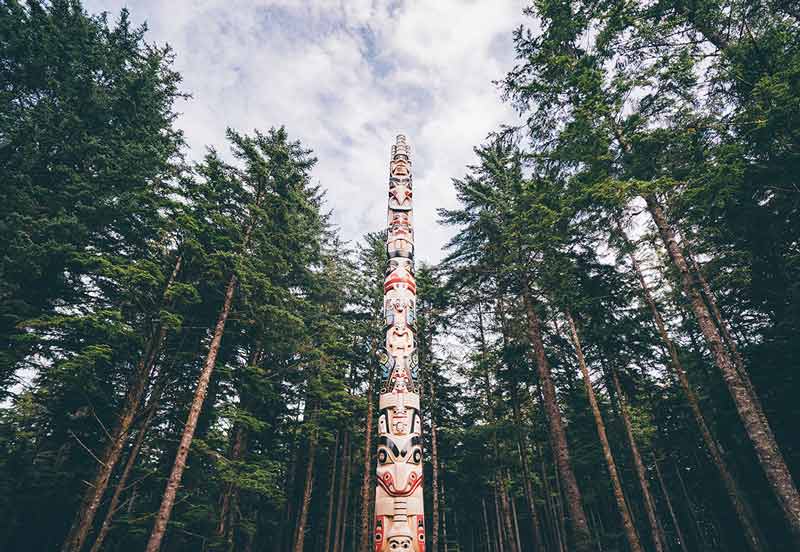
Gwaii Haanas National Park Reserve, National Marine Conservation Area Reserve and Haida Heritage Site are mystical and magical.
Come to discover Haida First Nations at Louise Island’s community of K’uuna Llnagaay (Skedans).
Now guarded by Watchmen, Haida guardians who manage each of the ancient village sites, K’uuna Llnagaay is the easiest to reach by boat with Moresby Explorers (just beyond Park boundaries).
The Moresby guide explains marine life and sets the context for the village, but when you step ashore onto the beach, the Watchmen take over.
I found seeing the community profoundly moving because the structural bones of this community – poles, homes – are disappearing under Mother Nature’s erosive hands.
I am keenly interested in First Nations culture and fascinated by the artwork of Emily Carr.
Born in 1871 in Victoria, Vancouver Island, she travelled to Haida Gwaii and many other native communities to paint First Nations people, poles, and way of life.
With binoculars, you may spy Killer Whales (Orcas) and bald eagles while you camp on-island, in informal beach-site campsites where (with a permit) you can dig for clams or fish.
Haida Gwaii is an extraordinary otherworldly if not mystical experience: make it a destination and fall in love with the wild.
6- Pacific Rim National Park Reserve
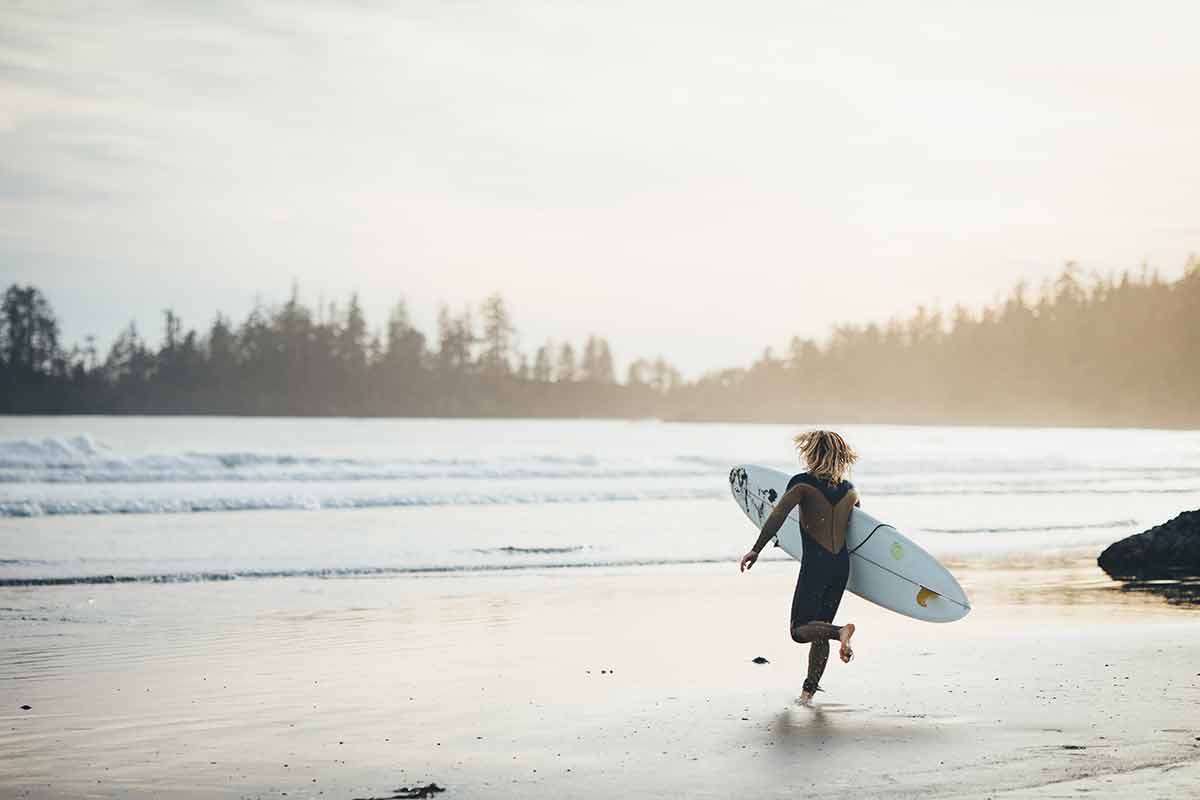
Wild ’n woolly is a great descriptor for Pacific Rim which sprawls along the western coast of Vancouver Island.
Here stroll “endless” beaches, where looking west you gaze upon the Pacific Ocean, while the dark rainforest has your back.
Long Beach is famous – and what a stretch it is, where wild ocean breezes can toss the spray into your face – while awesome swells are magnets to surfers.
Here too, hike the gruelling 75-km West Coast Trail, hear interpreters explain Nuu-chah-nulth culture, or sea kayak the Broken Group Islands.
Find out more about camping on Vancouver Island.
7- Gulf Islands National Park Reserve
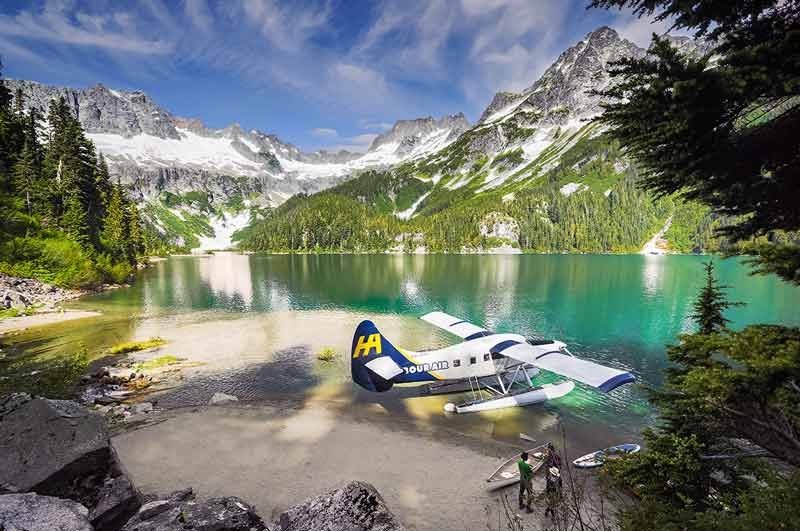
Explore 15 islands located between Vancouver Island and the mainland by kayak or by boat.
Sail or cruise the group of islands located in the Salish Sea.
Spot Bald Eagles; paddle amid sheltered islands where you’ll likely spy seals, and possibly (if you’re very fortunate), sea otters, whales (Orcas are relatively common) and porpoises.
Meanwhile, on terra firma, bicycle, or hike island trails ascending to lookouts where you’ll want to pause, have a snack lunch and appreciate the sweep of the ocean, glimpse lighthouses, and breathe deeply of fresh seaside air.
8- Yoho National Park
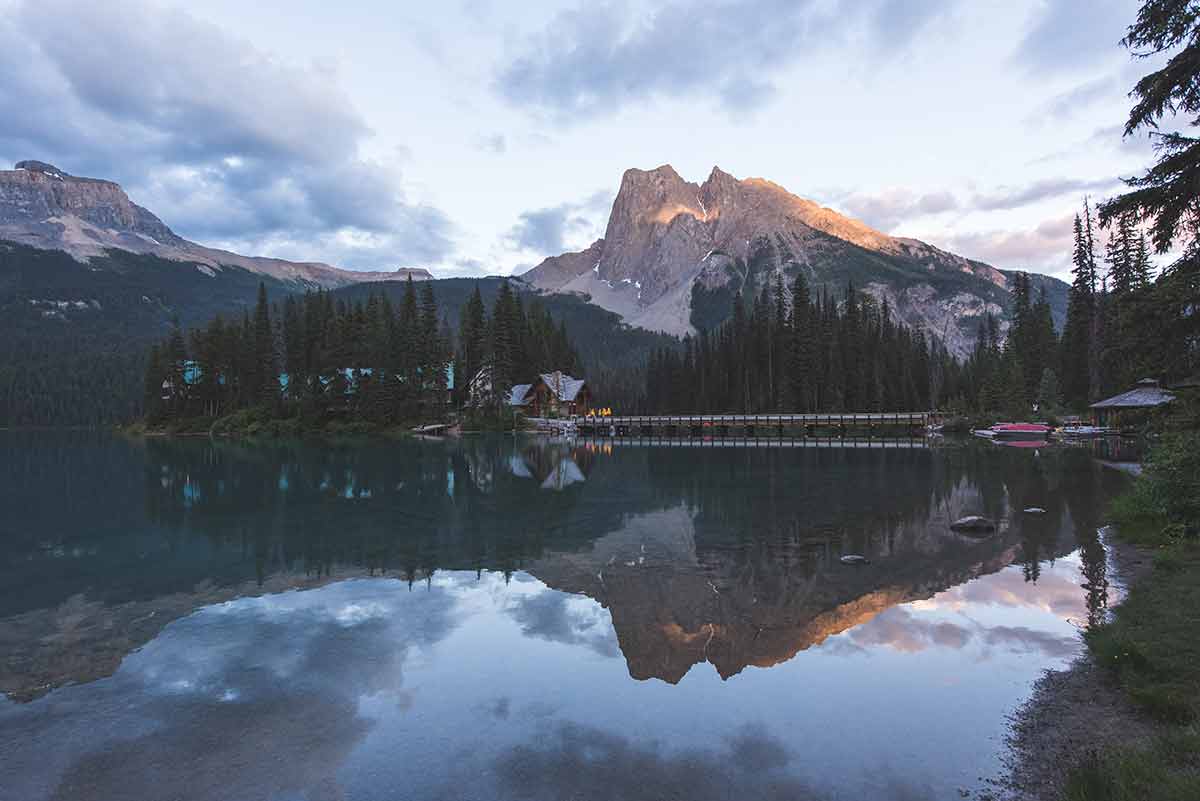
Yoho National Park is a landscape of soaring peaks, gushing waterfalls and plunging cliffs.
This British Columbia national park is the Rockies’ western slopes and is a drawcard for visitors seeking iconic Canadian vistas.
Yoho offers excellent hiking through subalpine forests and breathtaking Continental Divide views.
The Paget Fire Lookout hike is a chance to discover fungi, whitebark and limber pine trees.
This national park is home to a UNESCO World Heritage Site, the Burgess Shale fossils.
These 500 million-year-old fossils are older than the dinosaurs and were part of an ecosystem that existed after the first explosion of multicellular life on this planet.
9- Kootenay National Park
Kootenay National Park is a wild landscape of canyons, mountains, waterfalls and rivers.
The park consists of part of the Canadian Rockies and the Kootenay and Park mountain ranges.
The park’s landscape ranges from montane spruce to Englemann spruce and subalpine fir. The tallest mountain, Deltaform Mountain, is 3,102 m.
Grizzly bears and black bears roam the forests, along with red deer, white-tailed deer and bighorn sheep. There are also a variety of smaller predators like wolverines, badgers, bobcats and cougars.
Radium Hot Springs is another attraction within the park and is well-known for its therapeutic waters.
10- Glacier National Park
Glacier National Park is home to soaring peaks, stunning glaciers and Canada’s most extensive cave system.
Habitats range from snow forests to rainforests home to wolverines, cougars, timber wolves and black bears. Other species that roam this magnificent land include moose, elk, mountain goats and caribou.
The park’s highest mountain is Mount Dawson, and there’s also Mount Sir Donald to attract mountain climbers.
True to its name, it has over 130 glaciers and four rivers (Illecillewaet, Incomappleuxwith, Duncan and Beaver), with spectacular waterfalls cut through the national park.
The rivers helped form the Nakimu Caves, one of the largest Canadian cave systems.
The Rogers Pass was the final link in the railway that brought Canada together as a nation.
Part of the Selkirk Range is within the park and is a magnet for winter sports enthusiasts.
National Parks in Newfoundland and Labrador
11- Gros Morne National Park
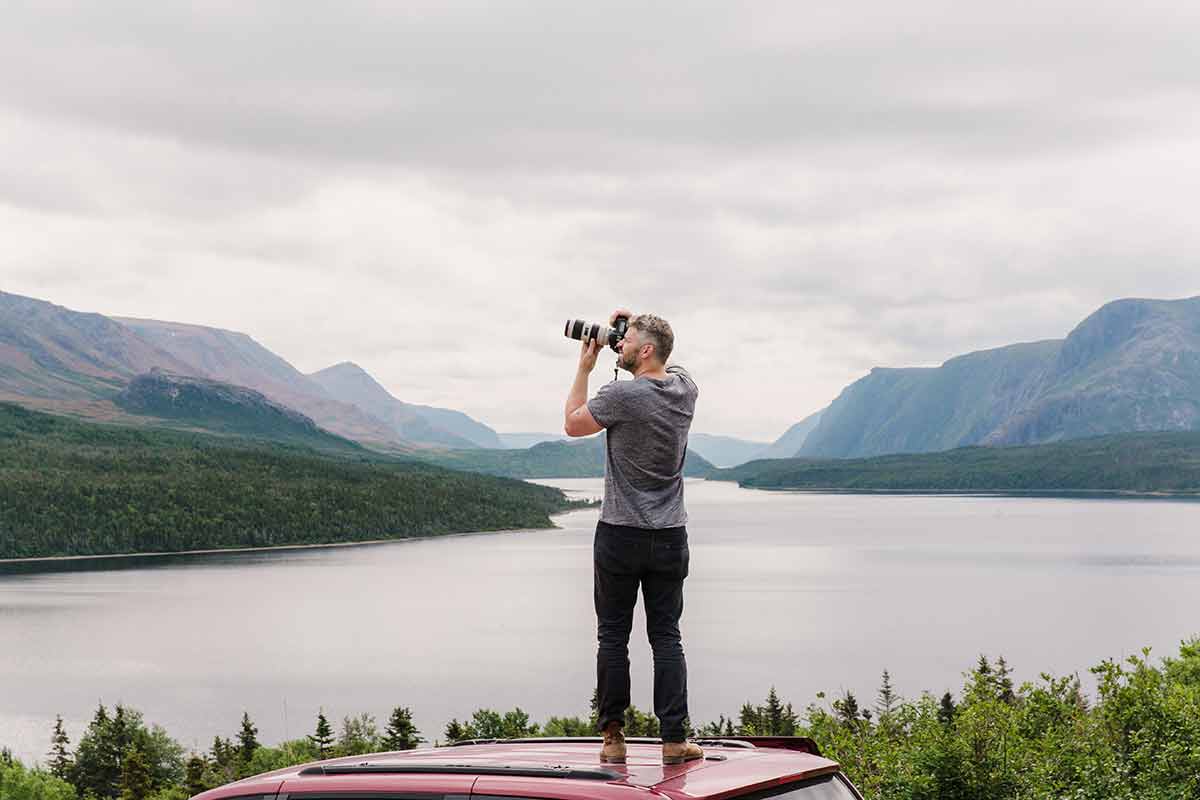
From stunning views from the summit of Gros Morne Mountain to experiencing breathtaking fjord scenery while cruising Western Brook Pond, this park gives us a passage through geological time.
In fact, Gros Morne is a UNESCO World Heritage site.
The Tablelands expose Earth’s mantle which was pushed to the surface more than a billion years ago.
Here, Parks interpreters spin tales of the collision of tectonic plates; the erosive, grinding power of glaciers; and point out hardy plants such as Newfoundland’s floral symbol, the carnivorous Pitcher Plant, which grow here.
The park is home to the Bonne Bay Marine Station which you’ll want to see because it explains marine wildlife and the health of oceans.
And don’t miss visiting Woody Point, a historic fishing village that is the site of a highly regarded annual festival, Writers at Woody Point.
At Gros Morne National Park camping is available in rustic cabins and oTENTiks.
12- Torngat Mountains National Park
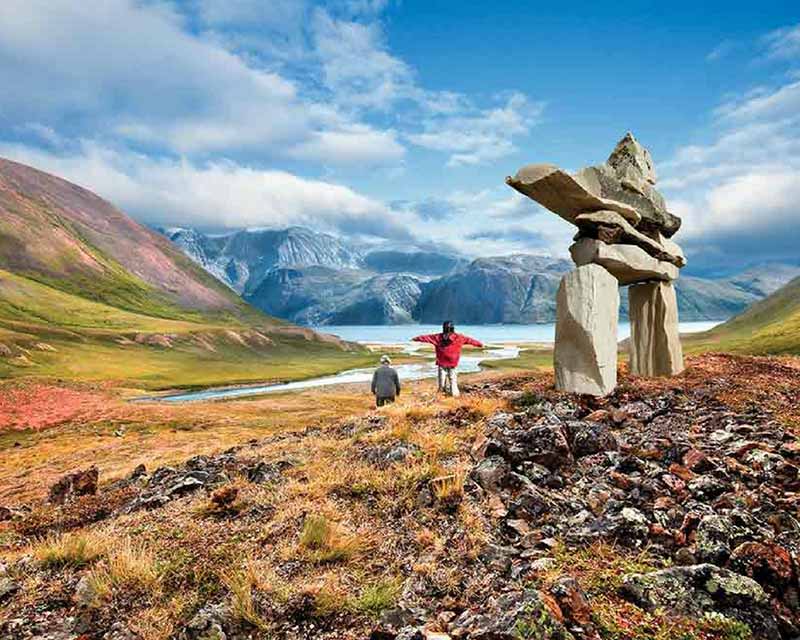
Oh, how I long to visit “The Torngats” in northern Labrador.
I yearn to view this park’s jagged skyline of lofty peaks, glaciers and fjords rising from the North Atlantic Ocean.
At Torngat Mountains National Park, visitors meet Inuit (meaning “the people” in the Inuktitut language), descendants of ancient peoples who have lived in this sub-arctic region for more than 4,000 years.
From listening to Inuit traditional throat-singing to learning about their connectedness to and dependence upon the land – to hiking through this windswept terrain of rugged mountains, a visit to the Torngats promises to be life-changing.
National Parks in Prince Edward Island
13- Prince Edward Island National Park
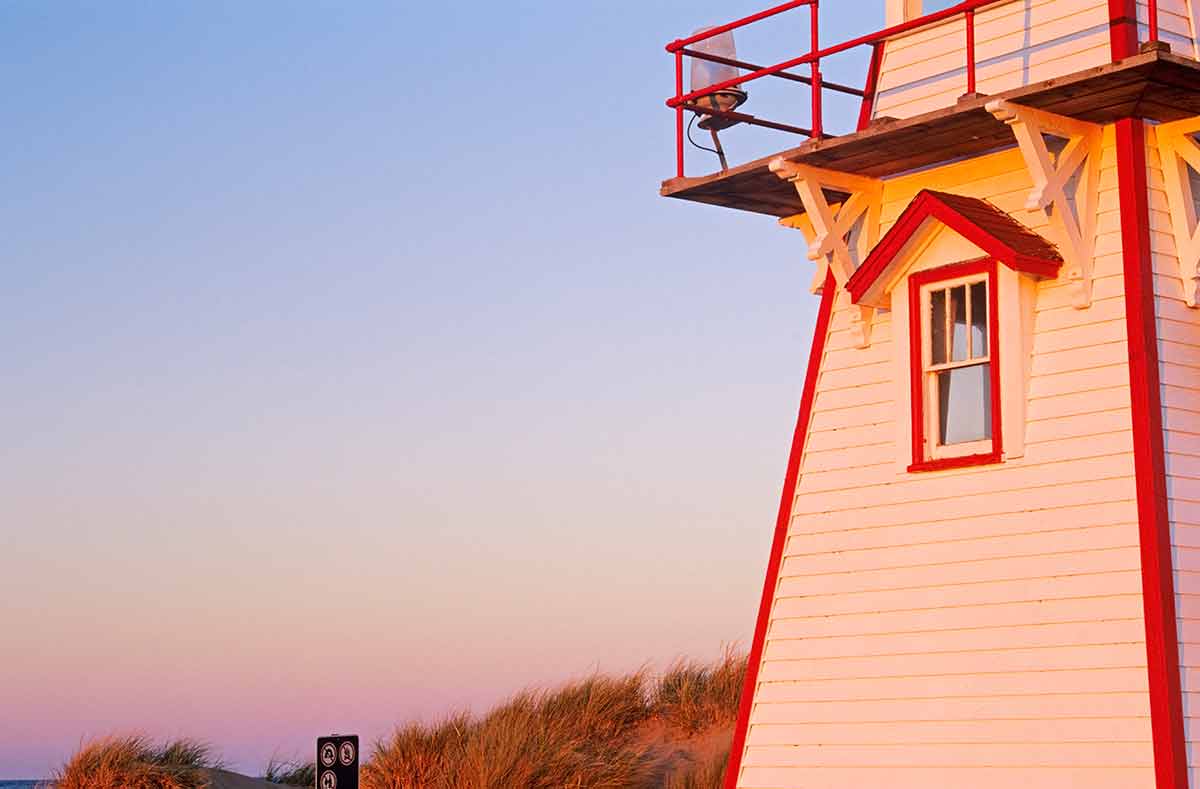
Perhaps the antithesis to the rugged parks of Labrador’s Torngats, PEI is known as the gentle isle.
Imagine a pastoral landscape of red earth, green rolling hills, sandy beaches and glorious sweeps of the ultramarine ocean.
Wow.
I want to be there, don’t you?
Canada’s smallest province welcomes us, where its national park invites us to build sandcastles on the beach, wander a boardwalk coursing through protected dunes and lagoons, and cycle oceanfront paths.
Interpretation programs run until September 4, so be sure to visit, participate, and learn about denizens such as crabs and shellfish through to red foxes and ospreys.
Nearby? Get to know PEI’s internationally renowned redheaded heroine, Anne Shirley, by visiting Green Gables – also managed by Parks Canada.
It’s a short drive west of the Park, where you’ll drive through Brackley Beach and North Rustico, two of PEI’s pretty seaside villages.
National Parks in Nova Scotia
14- Cape Breton Highlands National Park
Driving the Cabot Trail is a Canadian Maritime classic allowing at minimum a two-or-three day exploration of stunning coastline where we appreciate the meeting of mountains, forests, cliffs and ocean.
The drive is an amazing thing to do in Nova Scotia.
Cape Breton National Park offers picturesque Highlands landscape where waterfalls await – or stroll oceanside trails.
Cape Breton camping is one of the best ways to connect with nature.
Wildlife?
Take binoculars because you just might spy a minke or a pilot whale, bald eagles – or perhaps a moose as you wander inland trails.
National Parks in New Brunswick
15- Fundy National Park
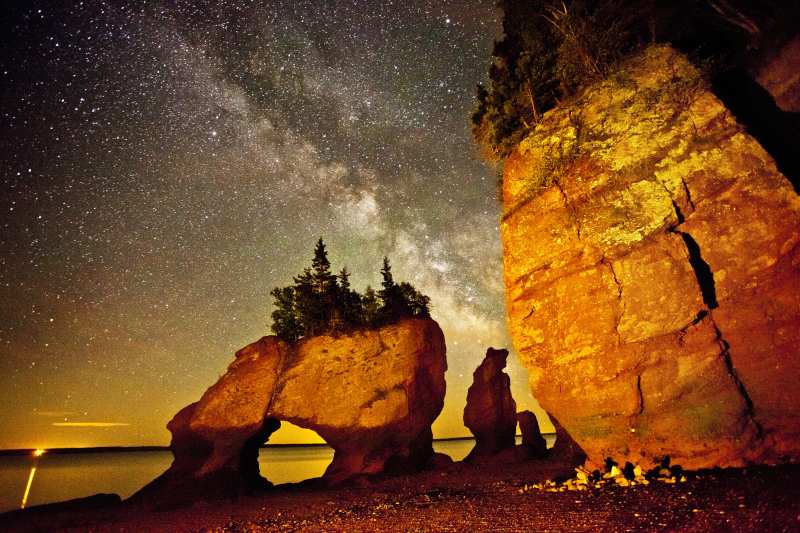
Fundy National Park is famous because it’s home to the world’s highest tides.
At low tide, the mudflat zone is fascinating to explore, where you can also wander through the “flowerpot” structures of tiny “islands” of red rock, complete with stunted-tree topknots.
Be sure to take a guided walk along the Fundy National Park trails where interpreters explain the intertidal habitat – and, when the tide’s in, kayak the shoreline.
Fundy National Park camping is quite an experience and one of the memorable things to do in New Brunswick.
With yurts – round tent-like lodgings – and other camping options, Fundy is part of the Southwest Nova Biosphere Reserve, a 1.5 million hectare landscape that has been home to the Mi’kmaq First Nations for more than 10,000 years.
16- Kouchibouguac National Park
Camp alongside a sweep of beach beneath a canopy of stars, where the ocean’s waves create their heartbeat rhythm.
Then come to Kouchibouguac National Park, one of Canada’s Dark Sky Preserves.
These are areas protected from development because of the profound beauty of the night sky unadulterated by ambient, artificial light.
I’ve not been to experience this yet, and so this is the second park that’s on my must-see list.
I wouldn’t want to miss visiting the Big Wigwam at Callander’s Beach, where Mi’kmaw First Nations explain their culture and history – and perhaps take a friendship necklace workshop.
Other special Kouchibouguac National Park moments?
Get yourself a permit and go softshell clam fishing – park staff will give you tips on how to prepare them for eating.
National Parks in Quebec
17- Saguenay – St Lawrence Marine Park
National Parks in Quebec come in many different guises and whale watching in Quebec is an activity you probably haven’t considered.
Parks Canada also manages several marine parks and the mouth of the Saguenay Fjord is one of the most spectacular.
The area offers Quebec whale watching at its best.
The Saguenay Marine experience begins at Tadoussac, where you can visit the Marine Mammal Interpretation Centre to see the skeleton of a 13m (40foot) sperm whale.
However, here at the Saguenay–St Lawrence Marine Park, belugas are renowned: they’re the white whale with the “smiling face.”
How to best experience this marine park? Go kayaking and experience the wild, up close and personal.
18- La Mauricie National Park
With its extensive mixed hardwood and softwood forests and more than 150 lakes, La Mauricie is an extraordinary Quebec National Park to explore.
That’s particularly so in autumn when Eastern Canadian woodlands’ deciduous trees turn colour.
Maples can be scarlet, crimson or gold. Ash, poplar, birch all turn various shades of brilliant yellow…
Imagine these hues cast against a backdrop of evergreen, and you have an amazing artist’s palette.
Come wintertime, the folds of the mountains are blanketed in snow, while waterfalls and lakes morph into blue-ice wonders
What to do?
In autumn, hike or bike through woodland trails; come winter, fat-biking, snowshoe, ski and learn the art of snow-tagging.
This is creating pre-set patterns (such as a spider and its web) on snow-clad frozen lakes using snowshoes and compass.
Stay overnight in Parks Canada’s cosy oTENTiks and use the pre-cut wood to fire up either a campfire or your wood stove – or both.
National Parks in Ontario
19- Georgian Bay Islands National Park
Imagine clusters of glacier-scoured rocky islands rising from the vast sparkling blue waters of Lake Huron, most sporting stunted white or red pine trees sculpted by the wind.
Then imagine the sunsets, glorious bands of orange and magenta reflected in the lake.
Georgian Bay is famous for its landscape which inspired the famous Group of Seven painters.
Whether you relax in lakeside cabins or camp at Georgian Bay campgrounds, bike easy trails, kayak or hike, right here at Georgian Bay Islands, the world’s largest freshwater archipelago awaits.
Georgian Bay Islands National Park may not be one of the most well-known Canadian National Parks in Ontario but it certainly is one of the loveliest.
20- Bruce Peninsula National Park
If scuba diving (or snorkelling) in crystal clear turquoise waters to examine some of the area’s 22 shipwrecks appeals, then come to the Bruce Peninsula jutting into Georgian Bay.
Learn about the shipbuilding industry on Lake Huron and see interactive displays explaining First Nations culture, explore a lighthouse and more by first visiting the Parks Canada Visitors’ Centre.
Not to be missed is a cruise of the Fathom Five National Marine Park – part of the Niagara Escarpment UNESCO Biosphere Reserve.
Here, 420-million-year-old dolomite rock outcrops rise from Lake Huron, creating an otherworldly landscape.
Special tip for keen, long-haul hikers: This region is particularly splendid during autumn because of the glorious autumn colours.
This is when hiking the Bruce Trail is fabulous.
The trail extends 890 km from Tobermory, a village located lakeside, in Fathom Five to the Niagara Peninsula.
Smaller portions of the trail can be done, or the whole thing in 30 or so days.
21- Thousand Islands National Park
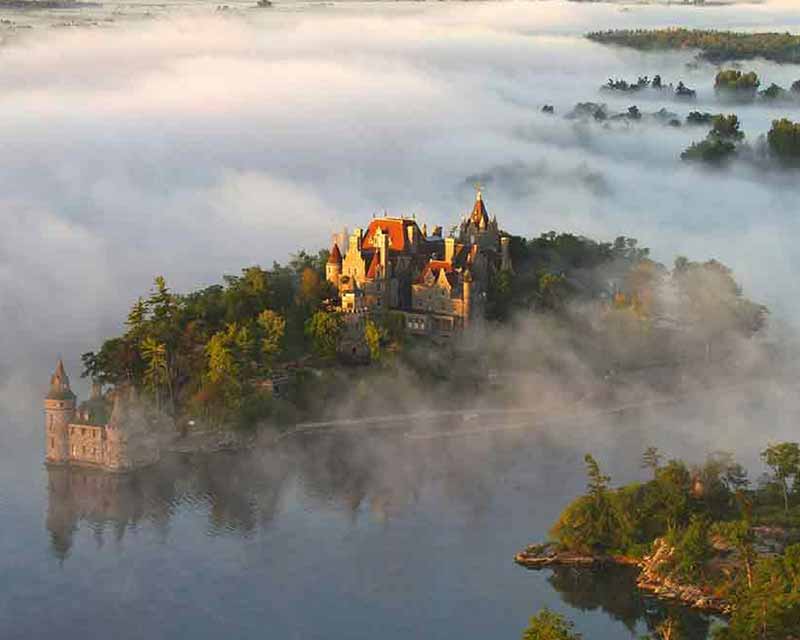
Yet another water-based park beckons, this time along the peaceful shores of Lake Ontario.
Cycle the connected islands on the Thousand Islands’ Parkway, a roadway that’s roughly 40 km long.
En route, scenic vistas of the scattered islands will spark many a photo-op.
This is a gentle park, where kayaking and canoeing, boating through the islands, and camping allows us to kick back, relax, swim, and enjoy the outdoors.
Thousands islands camping is a perfect way to enjoy the Canadian wilderness.
Check out Parks Canada oTENTiks on these islands, which make kayak-camping easy and relaxing.
National Parks in Manitoba
22- Riding Mountain National Park
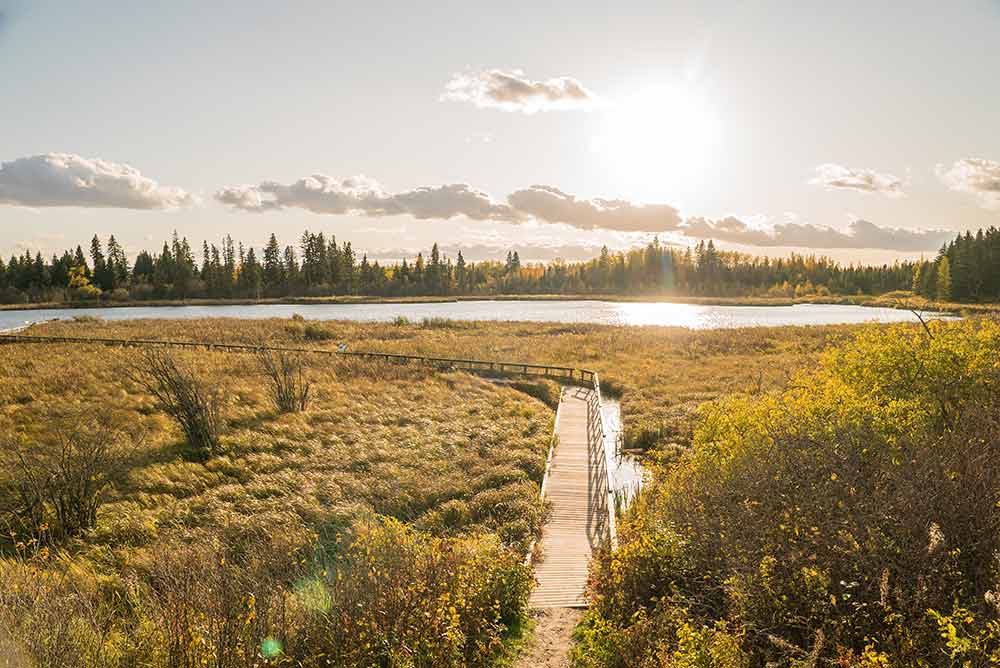
Want to experience Plains bison up close and personal?
You can observe these amazing beasts which once roamed the plains in their millions at Riding Mountain National Park’s Lake Audy Bison Enclosure.
Want to explore remnants of fragrant fescue-grass prairie or, come autumn, hear the bugling of elk, the male’s amazing mating call?
Then head west of Winnipeg to visit Riding Mountain on a Big Five safari, where you may very well see black bears, moose, red fox and coyote in this park’s environmentally diverse habitat.
My husband and I canoed here last summer, exploring several peaceful lakes where we were fortunate to see a moose mother and calf snoozing in a splash of dappled sunlight.
At night?
We opted for a Riding Mountain National Park camping experience in cozy oTENTiks.
National Parks in Saskatchewan
23- Prince Albert National Park
Central Saskatchewan features a biodiverse habitat of aspen woodlands (called “parklands”), seemingly endless boreal forest, grasslands – all peppered with farms as well as beautiful lakes.
In Prince Albert National Park, farms give way to forested hills and grasslands where plains bison roam.
Also, watch for uncommon White American Pelicans in the summertime.
What’s special here? Grey Owl’s cabin.
This Canadian legend was an early conservationist and author who embraced native culture and life so totally that everyone thought he was a First Nations.
Archibald Stansfeld Belaney was born in 1888 in England, travelling as a seventeen-year-old to Canada to become a trapper.
Here, in what’s become a Park, he built a cabin overlooking Ajawaan Lake in 1931, which we can visit. It’s a 20-km hike/canoe trip, so contact parks’ staff for instructions.
National Parks in Yukon
24- Kluane National Park and Reserve
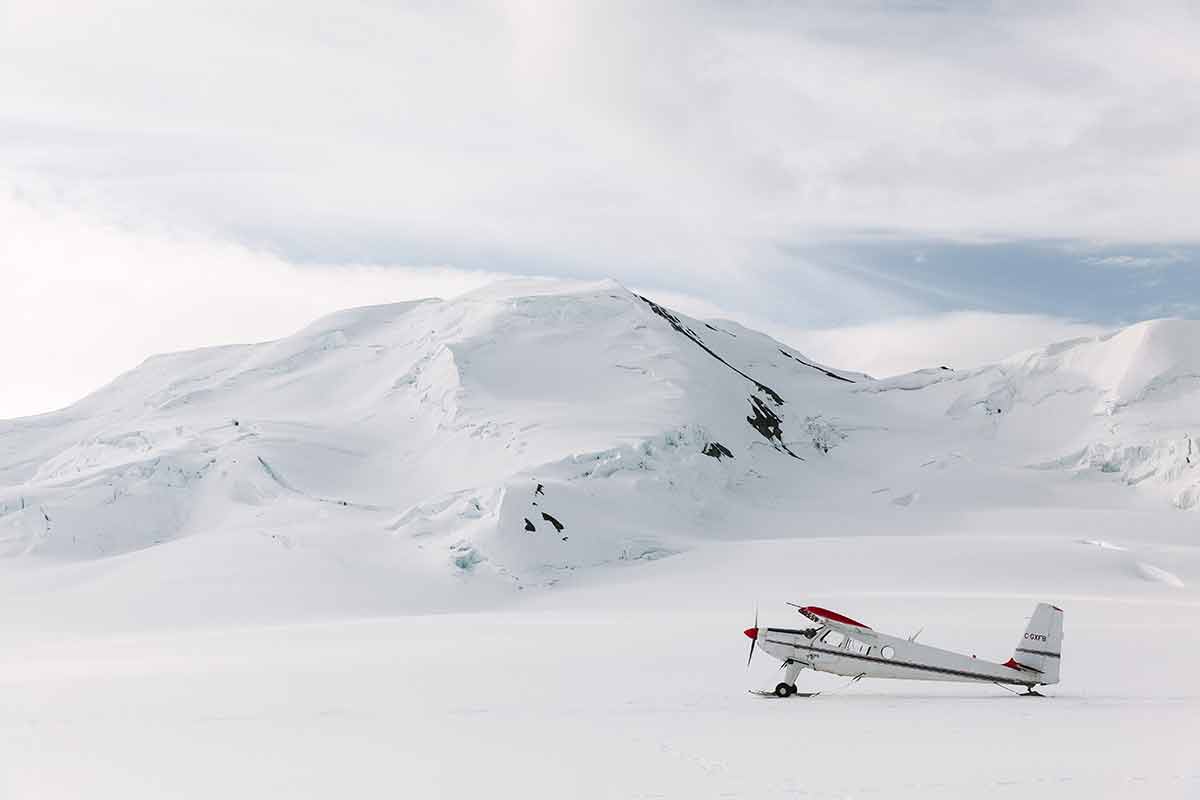
Ahhhh. Kluane.
Its name echoes wilderness to me and, in a country of fantastical wilderness, the Yukon remains special.
Perhaps it’s because of the “largest and tallest” array of destinations here.
Mount Logan is Canada’s highest mountain towering 5,959-metres.
There’s also the worlds’ largest ice field – and when I flew over it with Kluane Glacier Air Tours,
I was wowed with the lateral and terminal moraines, the blueness of the ice – and the way glaciers flow, just like water.
Here, too, I saw lynx, grizzlies, black (and cinnamon) bears, moose (and calves), red fox and other wildlife while driving along the highway, one glorious summertime evening, just before dusk.
Come for the paddling on clear mountain lakes.
Come for the camping, lakeside, when a full moon rises over the peaks.
Just come, and immerse yourself in Kluane.
You’ll never regret it.
Come to think of it? I don’t think you’ll have a moment’s regret visiting any of these Parks Canada national parks… Now, if only I can get to the Torngats and Kouchibouguac….
Katharine Fletcher lives near Ottawa and is the author of three companion guides to the National Capital Region.
- 25 Things To Do In Banff
- 25 Things To Do In Toronto
- 50 Things To Do In Vancouver
- 20 Things To Do In Whistler in Winter
- 7 Things To Do In Gananoque
- 30 Things To Do In Niagara Falls
- 20 Things To Do In Niagara On The Lake
- 30 Things To Do In Ottawa
- 25 Things To Do In Calgary
- 25 Things To Do In Winnipeg
- 20 Things To Do In Montreal
- Canada in Winter
- Canada in Summer
- Canada in Spring
- Canada in Fall
- 35 Things To Do In British Columbia
- 8 Things To Do In Penticton
- 10 Things To Do In Kelowna
- 11 Things To Do On Vancouver Island
- 22 Things To Do In Quebec In Winter
- 25 Things To Do In Yukon
- 20 Things To Do In Whitehorse
- 17 Things To Do In Yellowknife
- 20 Things To Do In Nova Scotia
- 5 Things To Do In Peggy’s Cove
- 11 Things To Do In Fredericton
- 20 Things To Do In Ottawa At Night
- Banff in Winter
Canadian National Parks Resources
Parks Canada has a national parks app to help figure out your trip, chock full of maps, photos, and information.
Camp accommodations, you quite reasonably ask? Parks Canada variously offers tent sites, cabins, oTENTiks ( a hybrid between a cabin and tent), yurts – and more. Check each park’s website for details.
Canadian parks practise LNT (Leave No Trace) principles, encompassing everything from planning and preparing for your trip through to leaving everything that you find, in its place.
That means no picking flowers, removing rocks and leave nothing but footprints behind.
Air Canada has flights from several cities around the world, including Melbourne, Sydney and Brisbane to Vancouver.
Plan Your Trip

Rent A Car – Find the best car rental rates at Discover Cars. They compare car hire companies to provide you with the best deal right now.

Find A Hotel – If you’re curious about this article and are looking for somewhere to stay, take a look at these amazing hotels.





